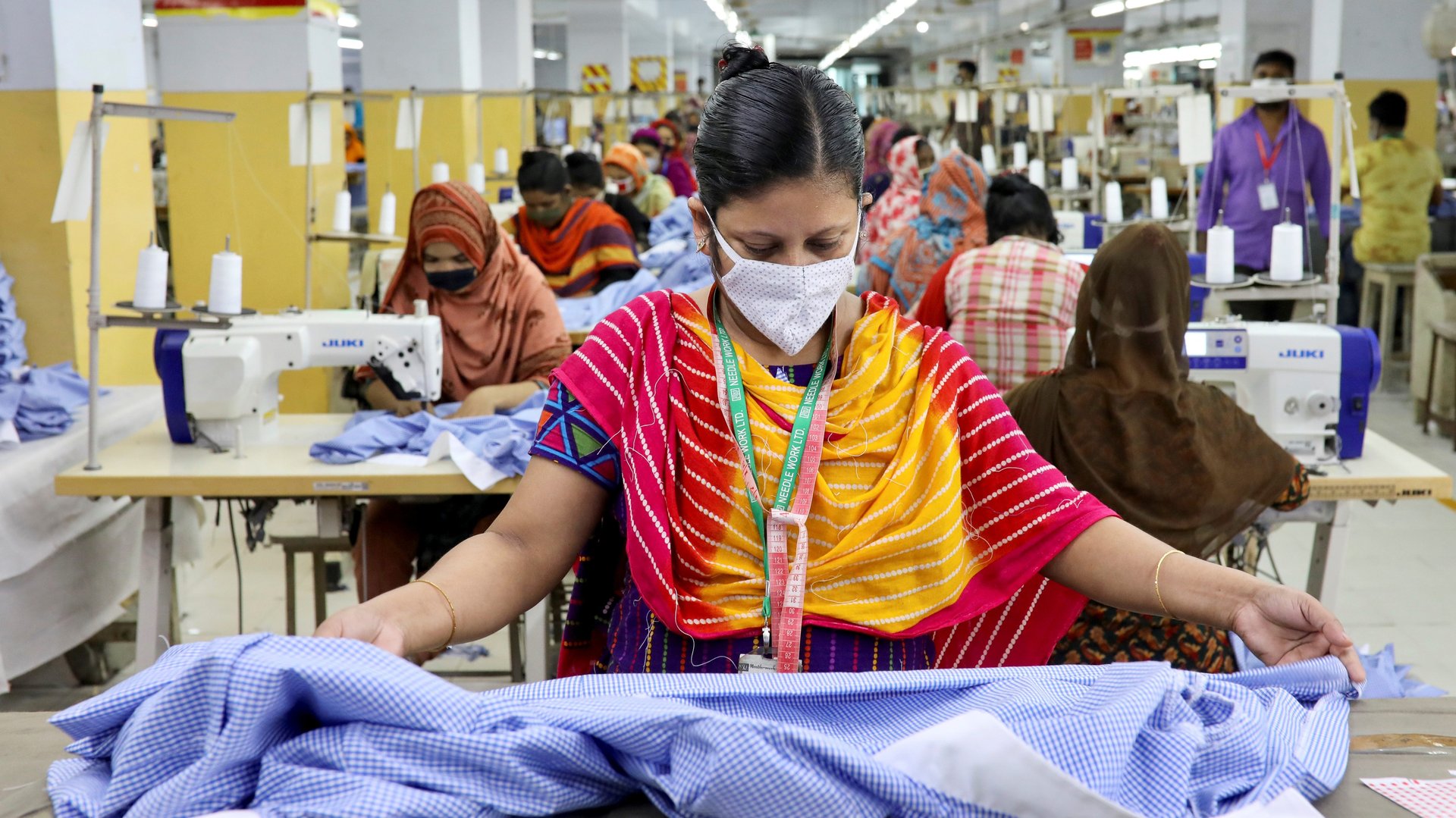Fashion companies want cheaper goods—and it’s garment workers who are paying
US and European fashion companies canceled a huge volume of orders from their suppliers after Covid-19 hammered sales earlier this year. The consequences were far-reaching. Many of those factories are in low-wage countries around Asia where workers may live on the brink of destitution. Without orders to complete, many had their hours slashed or cut entirely.


US and European fashion companies canceled a huge volume of orders from their suppliers after Covid-19 hammered sales earlier this year. The consequences were far-reaching. Many of those factories are in low-wage countries around Asia where workers may live on the brink of destitution. Without orders to complete, many had their hours slashed or cut entirely.
But even as orders for new clothing have returned, garment workers remain in a precarious situation as factories say companies have demanded they produce their clothes for lower prices.
In a survey of 75 suppliers, predominately in countries around Asia and Central America, more than half said the fashion companies they supply cut their prices compared to last year. The survey, conducted by Penn State University’s Center for Global Workers’ Rights in association with the independent watchdog group Worker Rights Consortium, found companies reducing prices an average of 12% relative to last year’s price for the same item.
“As a result, 56% of suppliers have been forced to accept some orders below cost, and the majority anticipate having to continue to do so,” the report stated. The factories also reported having lower order volumes overall, and many that previously had orders canceled without payment still haven’t been paid in full. Without a change, factories could ultimately be forced to cut jobs or close.
In Bangladesh, which has grown into the world’s second largest clothing exporter behind China largely because of its low costs, factory owners say they’re feeling the pressure. Mostafiz Uddin, managing director of Denim Expert Limited in Dhaka, said factories have little choice but to accept the price cuts. “What else do you expect from the manufacturer?” he said during a virtual conference held by fashion trade outlet Sourcing Journal Oct. 14. “Overhead costs are fixed. You have to pay the workers every 26 days.”
One Bangladeshi supplier to companies such as H&M and Gap told Reuters customers were demanding price cuts as high as 15%. The surge in orders he expected ahead of the holidays hasn’t materialized. “We are taking orders just to survive,” he said.
Factories in numerous countries have also had to contend with temporary shutdowns due to the pandemic. The total impact of all these issues, while hard to measure, has been significant. The International Labour Organization believes (pdf) estimates the typical garment worker in Asia and the Pacific region lost two to four weeks of work, while only three in five kept their job at all. Those still employed saw their earnings fall.
Earlier this month, Penn State’s CGWR and the WRC estimated from trade data (pdf) that garment workers lost more than $1.6 billion in wages “based on reduced imports and retroactive price discounts for the US and EU markets alone.”
The layoffs and reduced hours have left countless workers and their families at risk. One recent survey (pdf) of more than 1,000 Bangladeshi garment workers found most had seen their income fall, and 77% said it was difficult to feed everyone in their household. Many were unable to save money or had to use their savings for food. Nearly all said they had reduced their other expenses, potentially including health care.
Watchdogs have long criticized fashion companies for pressuring suppliers into offering ever-lower prices. The pandemic has created even more leverage to do so.